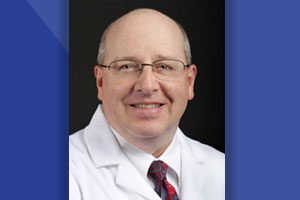In the aftermath of a mass casualty, first responders are critical to treating injuries and saving lives. Anesthesiologists can be a valuable asset on the front lines of care.

Joseph McIsaac, M.D., M.B.A., CPE, FASA
Anesthesiologists possess the medical skills, emergency mindset and ability to step into the role. During Monday’s session “Mass Casualties and the Anesthesiologist: It’s Not Just About the O.R. Anymore,” Joseph McIsaac, M.D., M.B.A., CPE, FASA, a Clinical Professor of Anesthesiology at UConn and Partner and Director at Integrated Anesthesia Associates in Hartford, Connecticut, is among the speakers who will reshape the conversation and discuss the shift in bringing anesthesiologists to the front lines.
“Anesthesiologists typically work in the controlled environment of the operating room and are not identified as first responders, despite having extensive skill overlap with emergency physicians,” Dr. McIsaac said. “In some European countries (France and Estonia are good examples), the ambulance service, the emergency room, the operating room and the ICU are all run by anesthesiologists.”
1:15–2:15 p.m.
Monday
W303ABC
Mass shootings, bombings, chemical attacks and natural disasters continue to increase the incidence of mass casualty events. The 2017 mass shooting in Las Vegas highlighted the ability of anesthesiologists to take on both traditional and non-traditional roles in patient management.
Anesthesiology’s expanded expertise can lead to an increase in patient safety and reduction in morbidity during these crises. In particular, an anesthesiologist’s knowledge of disaster airway management, stopping life-threatening bleeding, emergent chest tube placement and triaging patients during a disaster should be part of front line care.
Dr. McIsaac encourages anesthesiologists to refresh their training in these areas by accessing the Committee on Trauma and Emergency Preparedness resources on the ASA website, attending the lectures and workshops at ASA annual meetings and reading the many books written by anesthesiologists who have mass casualty experience.
In San Francisco last year, Dr. McIsaac and his team conducted a mass casualty training event and provided guidance to participants as they treated mock bomb-blast and gunshot victims in the field and the ER. Using a combination of moulaged (trauma makeup) live actors and robotic mannequins, the team taught mass casualty triage, life-saving surgical interventions (chest tubes, tourniquets, etc.) and situational awareness. Students learned to prioritize resources and manage the chaos of a disaster scene.
Dr. McIsaac has been training for mass casualties his entire career, beginning as a medical student in the Army Reserve. Having been through countless drills in the military, he has never been called into action in a civilian mass casualty, but knows many colleagues who have been on site at mass casualties in Boston, Las Vegas, Pittsburgh and other places.
“Anesthesiologists routinely train for rare events (like malignant hyperthermia) that most will never see in their careers,” Dr. McIsaac said. “Airway management is central to what we do. We are the experts. Bleeding control, chest tubes, etc., are skills we often learn during our early training but no longer use. Triage is a skill that is not commonly taught to our specialty in the U.S., so we have identified the gaps and produced training that fills the need as it arises.”
The session also will cover lessons learned from the Las Vegas shooting.
Return to Archive Index